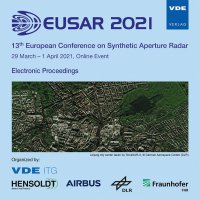Quantum annealer for network flow minimization in InSAR images
Conference: EUSAR 2021 - 13th European Conference on Synthetic Aperture Radar
03/29/2021 - 04/01/2021 at online
Proceedings: EUSAR 2021
Pages: 4Language: englishTyp: PDF
Authors:
Otgonbaatar, Soronzonbold (German Aerospace Center (DLR), Oberpfaffenhofen, Germany)
Dactu, Mihai (German Aerospace Center (DLR), Oberpfaffenhofen, Germany & University POLITEHNICA of Bucharest (UPB), Romania)
Abstract:
Quantum Annealer (QA) is well-suited for a certain class of optimization problems which can be expressed as a Quadratic Unconstrained Binary Optimization (QUBO) problem. A QUBO problem belongs to the family of Integer Programming problems which are called the NP-hard optimization problems. Feasible solutions of such problems can be found by using classical optimization techniques. However, studies claim that QA can find a feasible global solution that is faster than a classical annealer for QUBO problems. Hence, it appears promising to program and use the QA-to-QUBO approach for Earth Observation. In search of the QUBO problem in the domain of Earth Observation, we examined several Inteferometric Synthetic Aperture Radar (InSAR) applications and identified a residue connection problem in the phase unwrapping procedure. In particular, we consider the residue connection problem with multiples o 2pi as a QUBO problem. For this practical problem, we studied how to formulate this QUBO problem, and we examined the challenges to program the D-Wave quantum annealer, in particular, embedding the QUBO problem into our QA architecture with a so-called Pegasus topology, and the annealing parameter settings in the D-Wave quantum annealer. We then analysed the parameter effects on finding the global minimum of the residue connection problem. From these results, we derived and enhanced our insight for programming future quantum annealers; for instance, choosing real-world problems in Earth Observation, conceiving the embedding procedure, and the tuning of the annealing parameters.


